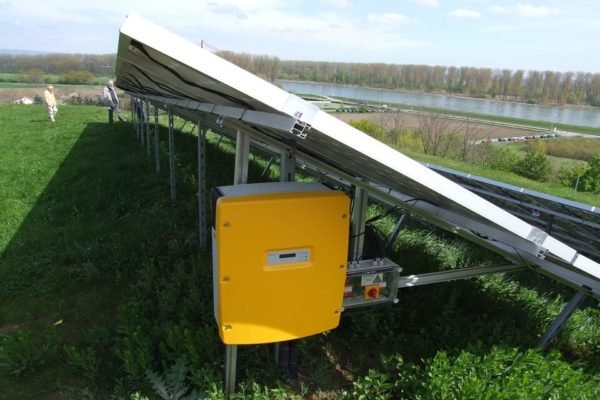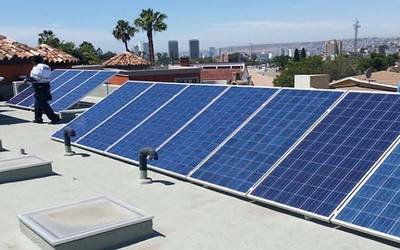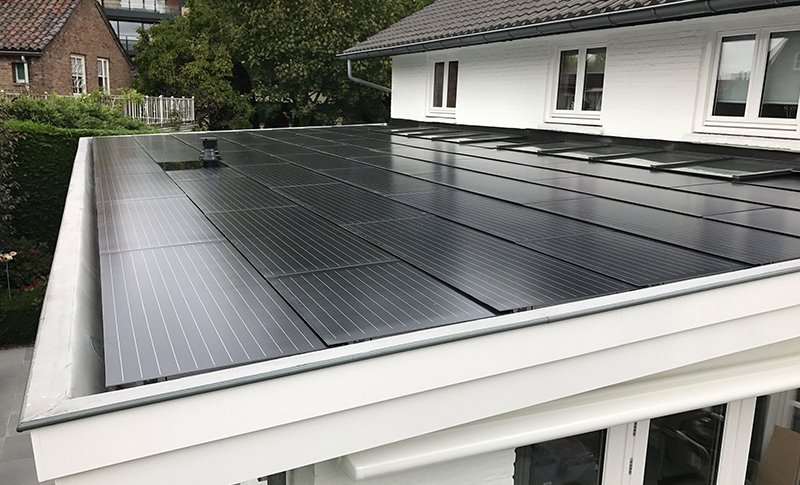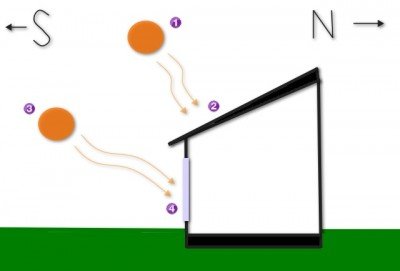
What are Solar Inverters
Solar inverters are indispensable devices to be able to use the electricity generated by the solar panels in our home. , but you know What are Solar Inverters?
One of the key decisions when making an installation of solar panels on your roof is the type of inverter. After solar panels, photovoltaic solar inverters are the second most important element of a solar photovoltaic installation.
What are Solar Inverters?

A photovoltaic inverter is a converter that transforms the direct current it receives from the photovoltaic panels into alternating current, which is what you can use in your home, store in batteries or pour into the network.
What types of solar inverters are there?
In the case of residential solar self-consumption, three types of solar inverters are used: string or chain inverters, microinverters and power optimizers. In the solar industry, microinverters and power optimizers are referred to as module level power electronics or MLPEs (Module Level Power Electronics).
Nowadays string investors are the most used at a residential level in the whole world, monopolizing a high market share. However, the MLPE technologies are beginning to become hollow, since they have managed to reduce many manufacturing costs.
In relation to this, according to IHS analysts’ report: “the improvement in integrated electronics and in the life cycle of microinverters and power optimizers is favoring the development of these technologies. It is expected that in 2019 it will have a growth of 19% “.
Surely you have doubts about what type of photovoltaic solar inverter is best for your home or business. All have the same function, however, there are some differences between them.
String inverters (or chain)
String inverters are currently the most used option worldwide. If your home has a roof that is not affected by shadows and has a unique address, they are a good choice.
For example, if your house has a gabled roof, it will be a good solution if you only put photovoltaic panels in one of the skirts, but if you put them in both you will be facing a terrible solution.
Operation of string inverters
The solar panels are connected in series with each other, and are grouped into branches. Each branch is connected to a single solar inverter, which is responsible for converting the direct current from the panels into alternating current.
The string inverter was developed decades ago, so it is a mature technology that has been tested and is effective, however, is not suitable for certain types of installation.
Because of its principle of operation, a string inverter captures as much electricity as the less efficient panel of the branch, that is, if a single panel of the branch is affected by a shadow at any time of the day or in a stationary manner, the entire power of the branch is reduced to the power of the panel that is in the shaded area.
As a consequence of this, the string inverter is not a good solution when your panels are oriented towards several directions or are affected by shadows.
These shadows caused by the surrounding objects are one of the main reasons why a panel significantly decreases, or even annuls, its production. Therefore, a good solution to avoid a shadow area of your roof is to eliminate the object that produces or not install in the shaded area.
Microinverters
Microinverters have gained popularity in recent times in residential photovoltaic self-consumption. However, microinverters tend to be more expensive than string inverters and power optimizers but have certain advantages. Over time, the cost of microinvestors continues to decline, which directly affects the increase in sales.
Operation of microinverters
The microinverters are installed on each solar panel individually. Each one of them is an independent converter that transforms the direct current into alternating current in situ, without the need for the direct current to travel to the investment center as it happens with string inverters. The microinverters can be integrated directly into the solar panel or placed close to it, in the metal structure.
The main advantage that microinverters offer over string inverters is the elimination of the negative impact produced by shadows , whether total or partial. Consequently, production increases because the “bottleneck” effect produced in string inverters is eliminated. In addition, the microinverters allow individual monitoring of each panel.
Power optimizers
Power optimizers have the same advantages as microinverters compared to string inverters, but are slightly cheaper. Often, power optimizers are considered an intermediate solution between microinverters and string inverters, or a complement for the latter.
Performance of power optimizers
Like the microinverters, the power optimizers are placed on each solar panel individually and are usually integrated.
The main difference with microinverters is that power optimizers do not convert direct current into alternating current. They are direct current DC converters whose function is to modify the operating point of curve IV (Intensity-Voltage) of the panels that receive shadows, since the rest continues to work the same.
In other words, the power optimizers follow the MPPT (maximum power point) with fixed V (fixed voltage) of each circuit, which allows to unify the strengths of the branch connected to the string inverter.
Like microinverters, they allow the individual monitoring of each solar panel, reducing the effect of shadows on the operation of the photovoltaic solar installation. Facilities that use optimizers are more economically affordable and have lower maintenance costs.
Summary of key concepts
1 . The function of solar inverters is to transform the direct current from the photovoltaic system into alternating current for domestic use.
2. There are three types of solar inverters: string inverters, microinverters, power optimizers.
3. The technologies MLPEs (microinverters and power optimizers) are more expensive because they have more electronic equipment.
4. If some solar panel of the photovoltaic installation is affected by shadows or the installation is in several directions (complicated covers), the MLPEs technologies are the best solution .
5. Microinverters and power optimizers allow to monitor the production of each panel individually.
6. Microinverters and power optimizers allow your photovoltaic installation to have a slightly higher production .
Smart modules (Smart modules)
More and more often the manufacturers of power optimizers and solar panels are beginning to collaborate in the development of intelligent modules. They are the result of the integration of power optimizers or microinverters in solar panels.
Smart modules offer several advantages, such as: a simpler installation process and lower costs, since fewer installation hours are necessary.
Compare before making a decision
You must analyze all options, since all photovoltaic inverters good alternatives. At SotySolar we can help you choose the best option for you. Our network of installers will send you quotes that you will be able to analyze quickly and easily, in order to find the solution that best suits your particular home.
Tag-What are Solar Inverters, what are solar inverters, what are solar inverters, what are solar inverters, what are solar inverters, solar inverter to buy, what solar inverter is best, what are inverters for solar panels






